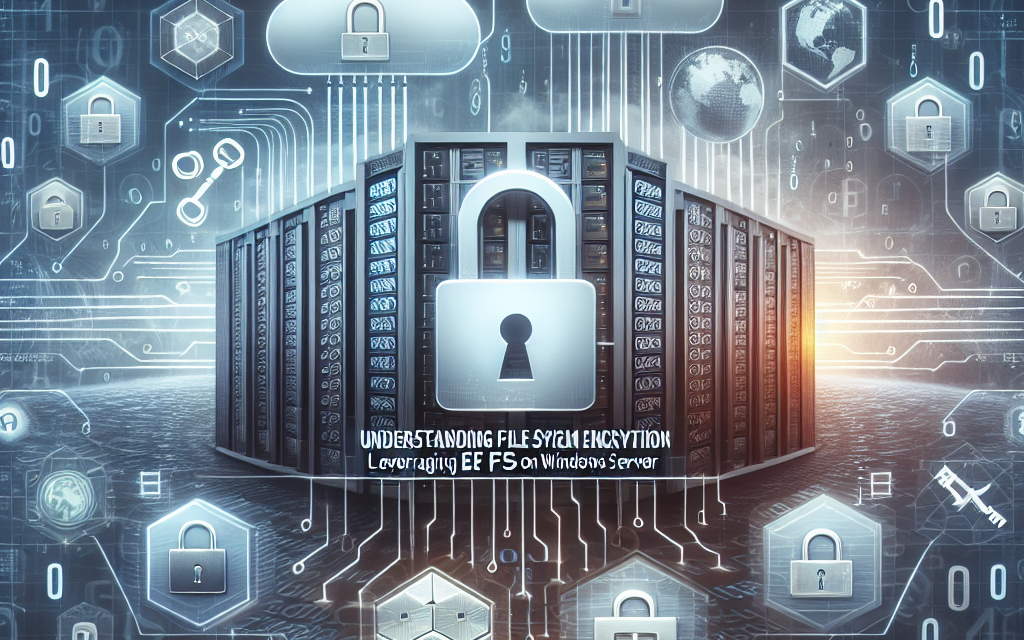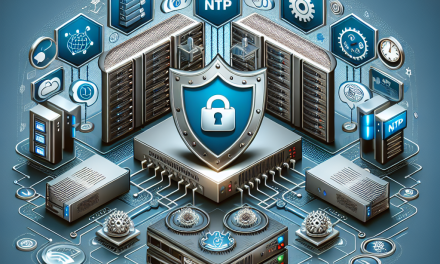In an increasingly digital world, the need for secure data storage has never been more critical. For organizations utilizing Windows Server, Microsoft’s built-in Encrypting File System (EFS) offers a robust solution for protecting sensitive data. This article explores the nuances of EFS, its implementation, usage scenarios, and best practices for maximizing its effectiveness.
What is EFS?
Encrypting File System (EFS) is a feature of the NTFS file system that enables users to encrypt individual files and folders on their Windows servers. By utilizing EFS, sensitive information can be safeguarded against unauthorized access, ensuring that only designated users or groups can view or modify the encrypted data. EFS is particularly useful in environments where data security is paramount, such as in finance, healthcare, and legal sectors.
How EFS Works
EFS relies on a combination of symmetric and asymmetric encryption techniques to secure files. Here’s a simplified breakdown of the process:
- File Encryption: When a file is encrypted using EFS, the system generates a unique session key (symmetric encryption key) to encrypt the file’s contents.
- Key Management: The session key is itself encrypted with the user’s public key (part of their digital certificate), ensuring that only the user can decrypt the session key.
- Decryption: When the user accesses the encrypted file, EFS uses their private key to decrypt the session key, which in turn decrypts the file.
Enabling EFS
To ensure that your Windows Server can utilize EFS, follow these steps:
- Check File System Compatibility: EFS is only available on NTFS file systems. Ensure your drives are formatted as NTFS.
- Enable EFS:
- Right-click the file or folder you wish to encrypt.
- Select Properties and click on the General tab.
- Click Advanced, then check the box for “Encrypt contents to secure data.”
- Click OK, then apply the changes.
- Backup Your EFS Certificate: It’s critical to back up your EFS private key to avoid data loss. Use the Certificates MMC snap-in to export your certificate.
Scenarios for Using EFS
1. Protecting Sensitive Data
EFS is ideal for encrypting files that contain sensitive information, such as payment records, personal information, and proprietary company data.
2. Remote Access Security
For organizations utilizing remote desktop services, EFS provides an additional layer of security for files accessed remotely. Even if an unauthorized person gains access to the server, encrypted files remain secure.
3. Compliance Requirements
Many industries are subject to regulatory compliance that mandates data protection measures. EFS can help organizations meet these standards by ensuring that sensitive data is encrypted at rest.
Best Practices for EFS Implementation
-
Regular Backups: Regularly backup encrypted files and ensure that your EFS certificates are also backed up. Without the private key, encrypted files cannot be accessed.
-
User Education: Train employees on the importance of data encryption and how to use EFS properly. Make them aware of the risks involved with data handling.
-
Centralized Management: Consider using Group Policy to enforce EFS across user accounts or organizational units within Active Directory. This ensures consistency and adherence to security policies.
-
Monitor Usage: Keep an eye on which files are encrypted and regularly audit access logs. This helps in identifying unauthorized attempts to access sensitive data.
- Update Regularly: Ensure your Windows Server is kept up to date with security patches to protect against vulnerabilities.
Conclusion
EFS provides a powerful tool for organizations looking to enhance their data security on Windows Server. By understanding how EFS works and implementing best practices, organizations can significantly mitigate the risks associated with unauthorized access to sensitive information. Data is a valuable asset, and protecting it should be a priority—utilizing EFS is a giant step towards that goal.
For more insights on Windows Server and robust security practices, keep following WafaTech Blogs. Your data security journey starts here!





